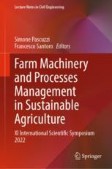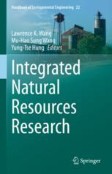Search
Search Results
-
Terricolous mosses impact soil microbial biomass carbon and enzymatic activity under temperate forest types of the Garhwal Himalayas
Estimates of enzymatic activity are used as indices for soil quality, microbial nutrient demand, microbial growth, and activity. Mosses trap soil...

-
Effects of the lichen Peltigera canina on Cucurbita pepo spp. pepo grown in soil contaminated by DDTs
Lichens consisting of a symbiotic association of green algae or cyanobacteria and fungi are found in a variety of environmental conditions worldwide....

-
Establishing trace element concentrations for lichens and bryophytes in the ring of fire region of the Hudson Bay Lowlands, Ontario, Canada
Peatlands dominate the landscape of the Hudson Bay Lowlands in Ontario, Canada. Recently, mineral deposits of chromium (Cr), nickel (Ni), and copper...

-
Impacts of climate warming on reindeer herding require new land-use strategies
Climate in the Arctic has warmed at a more rapid pace than the global average over the past few decades leading to weather, snow, and ice situations...

-
Assessment of a Big Square Baler Able to Reduce Soil Impurities During Baling Process. First Evaluations
In animal husbandry, results optimization is largely dependent on how the animals are fed so fodder-crops have a fundamental role in this sector....
-
Assessing Tunisia’s urban air quality using combined lichens and Sentinel-5 satellite integration
In Tunisia, urban air pollution is becoming a bigger problem. This study used a combined strategy of biomonitoring with lichens and satellite map**...

-
Perceptions on and impacts of environmental changes under multiple stressors: a case study from two communities in northern Fennoscandia
Against the backcloth of particularly fast environmental change in the Arctic, this study juxtaposes local perceptions of environmental change in two...

-
Arsenic Uptake and Bioaccumulation in Plants: A Review
Arsenic is a very dangerous metalloid categorized as a class 1 non-threshold carcinogen. Due to arsenic-contaminated food and drinking water...
-
Bog plant/lichen tissue nitrogen and sulfur concentrations as indicators of emissions from oil sands development in Alberta, Canada
Increasing gaseous emissions of nitrogen (N) and sulfur (S) associated with oil sands development in northern Alberta (Canada) has led to changing...

-
Lichens as the Main Indicator in Biological Monitoring of Air Quality
Based on the available knowledge on air quality impairment, there is now a need to know the type and degree of pollution. One of the basic...
-
Combined effect of acute salt and nitrogen stress on the physiology of lichen symbiotic partners
Nitrogen pollution and excessive salinity are commonly regarded as one of the major environmental concerns in recent decades in many urban...

-
Biological Strategies of Lichen Symbionts to the Toxicity of Lead (Pb)
Lichens are symbiotic organisms, originated by mutualistic associations of heterotrophic fungi (mycobiont), photosynthetic partners (photobionts)...
-
Impact of Air Pollution on Terrestrial Ecosystems
This chapter summarizes the current state of knowledge on the impacts of air pollution on terrestrial vegetation in general and in the Mediterranean...
-
Biomonitoring of airborne trace elements using transplanted lichens around a paper industry (Morelia, Mexico)
The deposition of trace elements around a pulp and paper industry in Morelia, Mexico, was evaluated using two lichen species as biomonitors. Samples...

-
Recurring heavy rainfall resulting in degraded-upgraded phases in soil microbial networks that are reflected in soil functioning
• We assess the recovery of microbial networks underneath crust to repeated rainfall.
• The network fragmentation after the second heavy rain was...

-
The influence of growth form and substrate on lichen ecophysiological responses along an aridity gradient
In this paper, we investigated whether growth form and substrate in lichens influence their physiological responses along an aridity gradient. Thalli...

-
Use of Lichens in Biological Monitoring of Air Quality
This chapter focuses on biomonitoring of air quality using lichens in the industrial, urban and suburban areas in cities and in the vicinity of...
-
Copper Content and Resistance Mechanisms in the Terrestrial Moss Ptychostomum capillare: A Case Study in an Abandoned Copper Mine in Central Spain
We present a case study on the tissue absorption of copper of a widely distributed moss species, Ptychostomum capillare in the polluted soil of an...

-
Treatment of Wastewaters from Chemical Industries
Chemical industry wastewaters are diverse in composition ranging from pharmaceutical products, polymers, petrochemicals, intermediates, and...
-
Threats and Conservation Strategies for Overlooked Organisms: The Case of Epiphytic Lichens
In this chapter, the main ecological factors that characterize the epiphytic environment and which determine the composition of epiphytic communities...
